
A 12,000-year-old monumental stele has been discovered at Boncuklu Tarla in southeastern Türkiye
Excavations at Boncuklu Tarla, located in the Ilısu neighborhood of Dargeçit district in Mardin, southeastern Türkiye, have uncovered a 12,000-year-old carved stone block measuring 2.20 meters.
Numerous findings from the Late Epipaleolithic period to the Neolithic Age have been uncovered at Boncuklu Tarla. According to archaeologists, Boncuklu Tarla is an important archaeological site that sheds light on human history, similar to Göbekli Tepe, Karahantepe, and Sayburç.
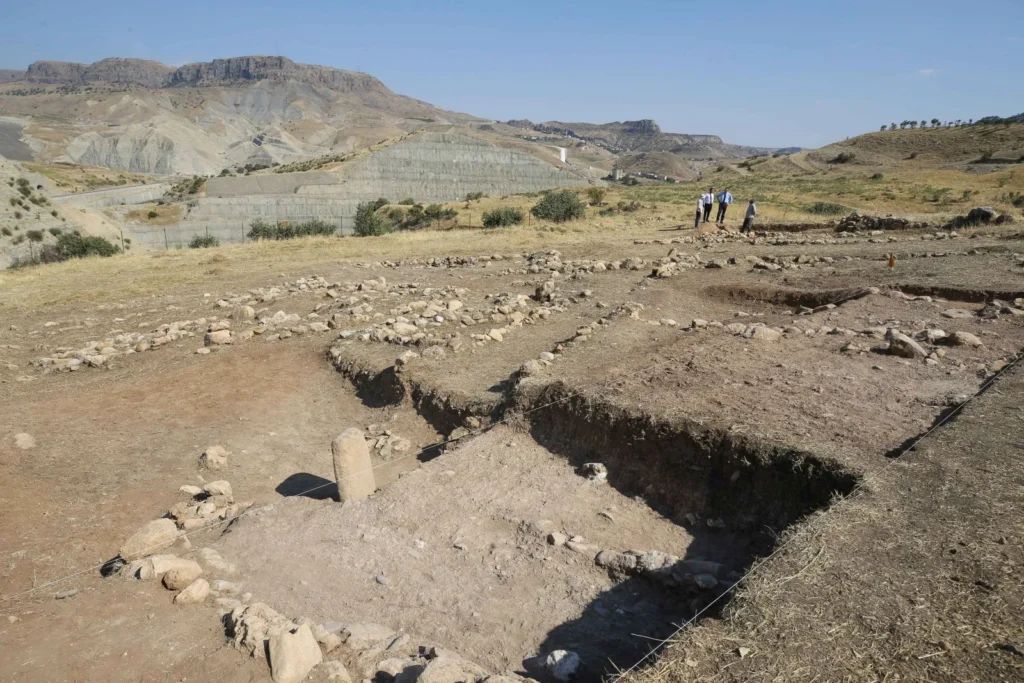
Excavations led by Assoc. Prof. Dr. Ergül Kodaş from the Archaeology Department of Mardin Artuklu University have recently uncovered the remains of a “public building” estimated to be 12,000 years old.
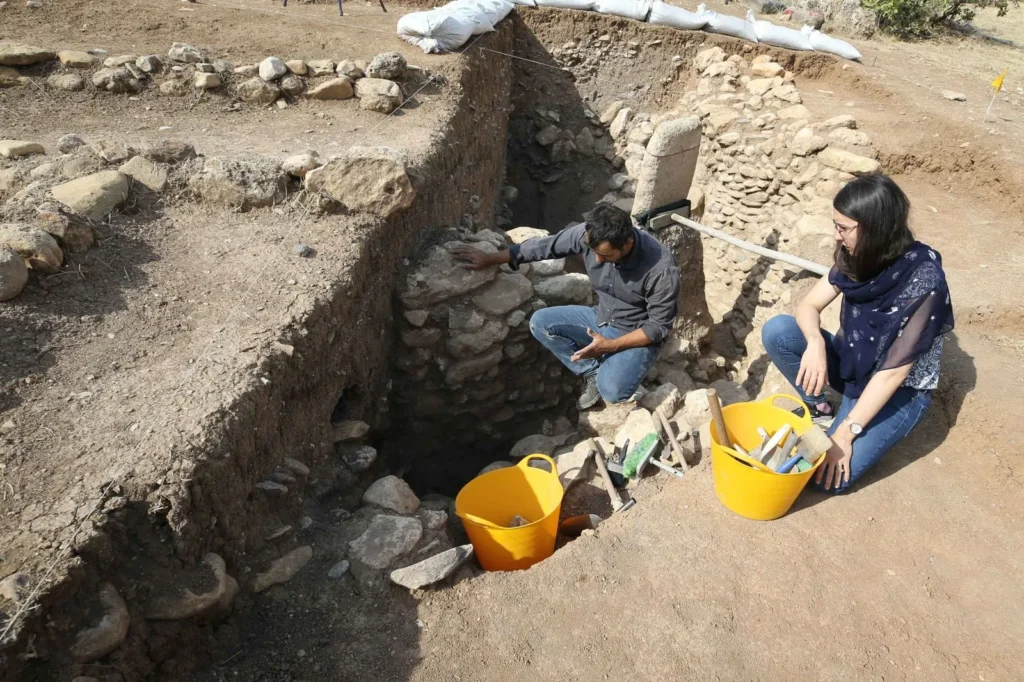
In the remains of the building, which has a diameter of approximately 10 meters, numerous artifacts have been found, including a 2.20-meter tall stele (carved stone block), miniature steles, beads, arrowheads, and bull horns.
Assoc. Prof. Dr. Ergül Kodaş stated the following about the discovered public building and the monumental stone stele:
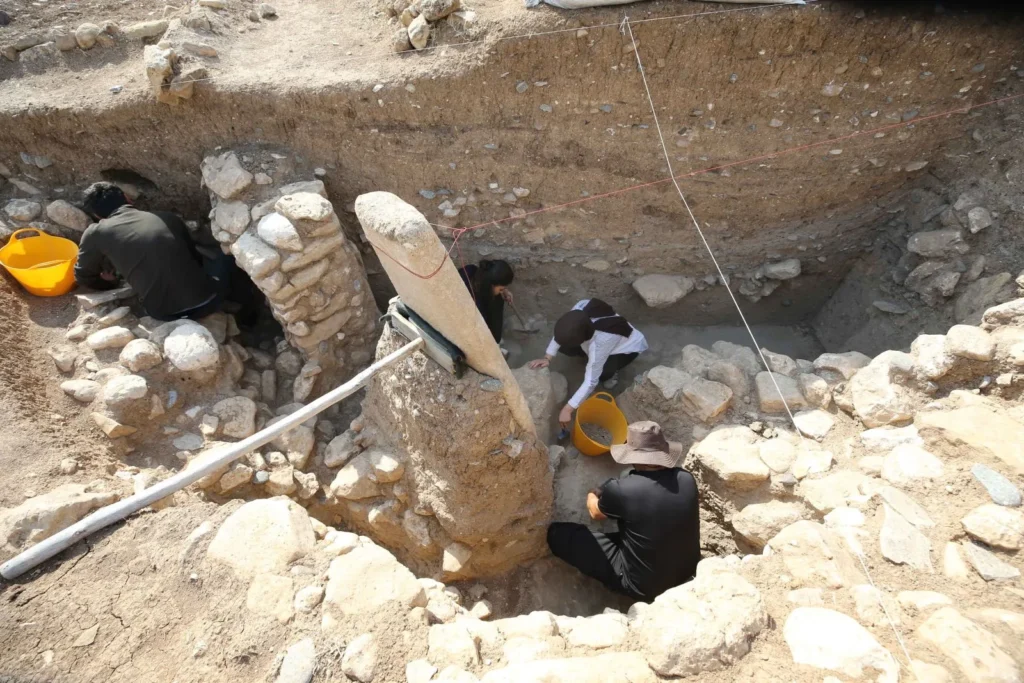
“We initially started excavations in what we call the eastern area, where we found numerous steles. In this context, we reached a building with a new stele in that area. We have only excavated part of it so far. This building has clearly allowed us to understand the layers leading to the early stages of the Pre-Pottery Neolithic period throughout Boncuklu Tarla. The building was not used just once; it has been renovated at least four times, and with each renovation, the floor was filled in and continued to be used. This indicates that the building was in use for a long time and, as we previously identified at Boncuklu Tarla, it was not simply used once and completely buried, suggesting a different application in this building.”
According to Kodaş, a large stele of this size has been found for the first time both in Boncuklu Tarla and in the Upper Tigris Valley.
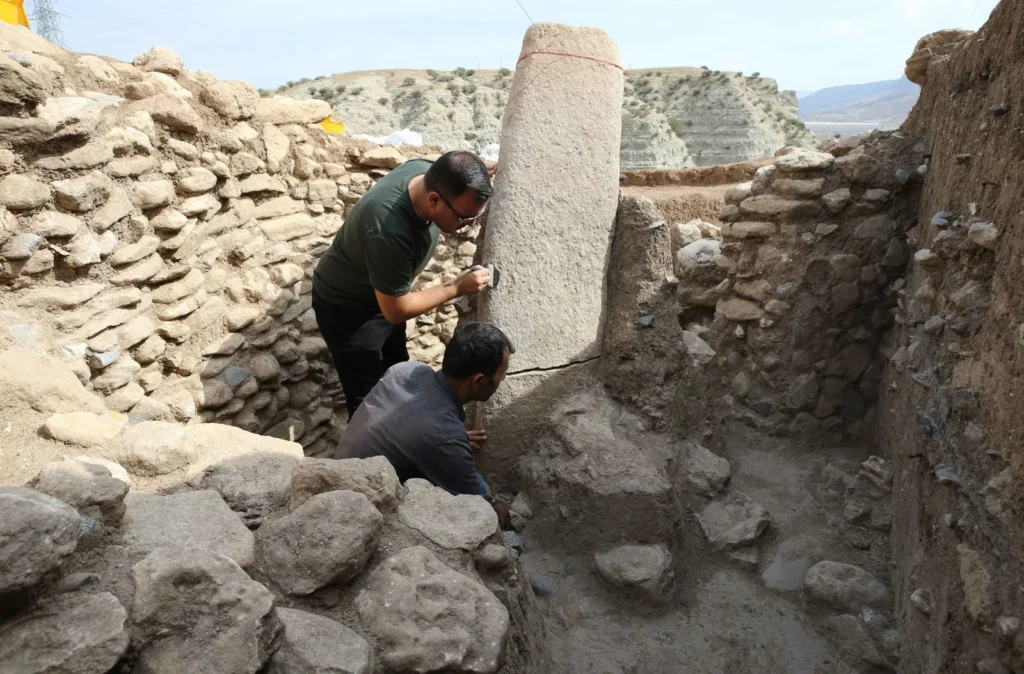
Additionally, the miniature stele found in the building, made in a model form, resembles the “T”-shaped steles found in the Şanlıurfa region, which is significant in demonstrating the relationship between the two regions.
The structure, considered a public building, belongs to the early stages of the Pre-Pottery Neolithic period. It is noteworthy that, while the structures uncovered so far have been used only once, this building has been in use for an extended period.
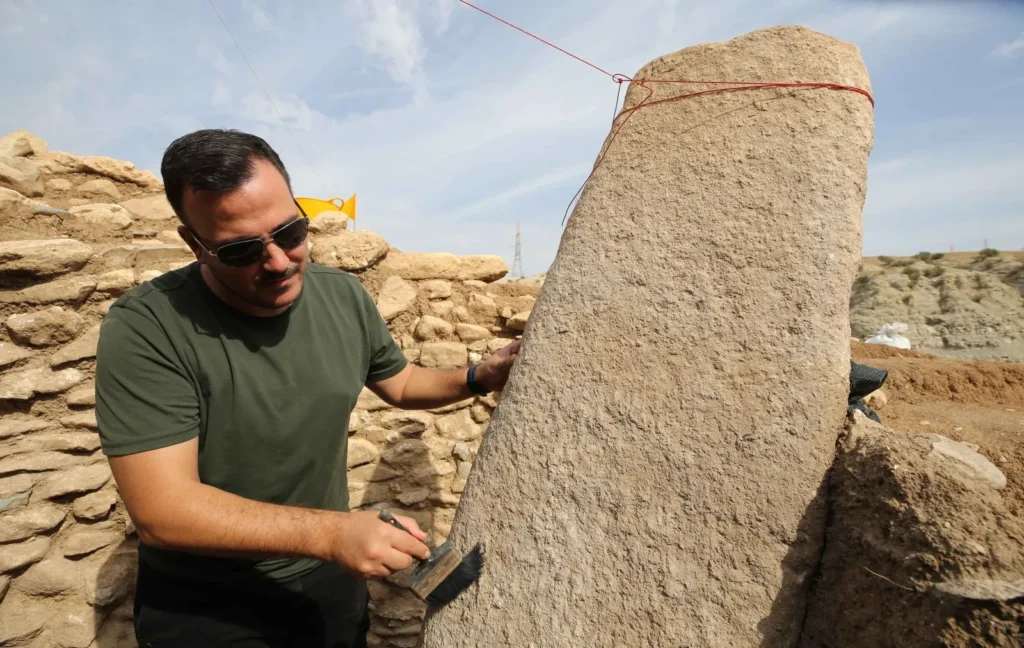
Kodaş stated, “We found miniature steles and small objects inside the building that may carry symbolic value. We discovered numerous bull horns and pieces of bull heads. This indicates that this building, like others, is a special building, a public building. However, it is different from the others because of the size of the stele. The artifacts we found are different, and due to the fact that it has been renovated and used at least four times, it is distinct. We believe it dates back to around 10,000 BC, although we have not yet conducted carbon analysis. The small artifacts we recovered inside the building, especially the chipped stone artifacts, are very similar to the objects we found in these layers at Boncuklu Tarla, contemporary with them. It has been used in the same process but is different from others in that it has been used for a long time. We estimate that it is approximately 12,000 years old.”
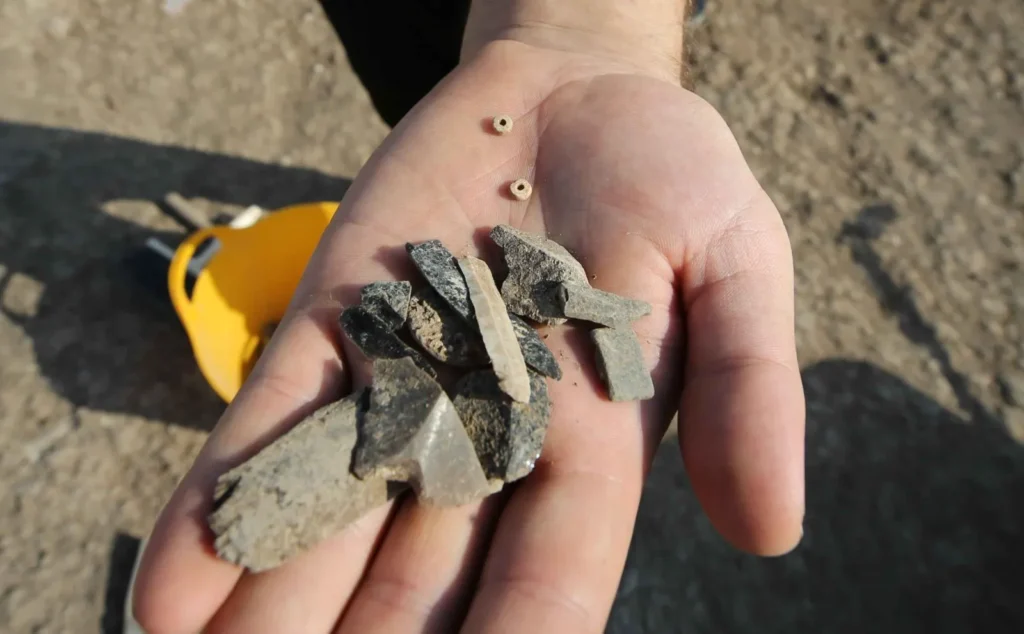
Cover Photo: Halil İbrahim Sincar/Anadolu Agency
You may also like
- A 1700-year-old statue of Pan unearthed during the excavations at Polyeuktos in İstanbul
- The granary was found in the ancient city of Sebaste, founded by the first Roman emperor Augustus
- Donalar Kale Kapı Rock Tomb or Donalar Rock Tomb
- Theater emerges as works continue in ancient city of Perinthos
- Urartian King Argishti’s bronze shield revealed the name of an unknown country
- The religious center of Lycia, the ancient city of Letoon
- Who were the Luwians?
- A new study brings a fresh perspective on the Anatolian origin of the Indo-European languages
- Perhaps the oldest thermal treatment center in the world, which has been in continuous use for 2000 years -Basilica Therma Roman Bath or King’s Daughter-
- The largest synagogue of the ancient world, located in the ancient city of Sardis, is being restored











Leave a Reply